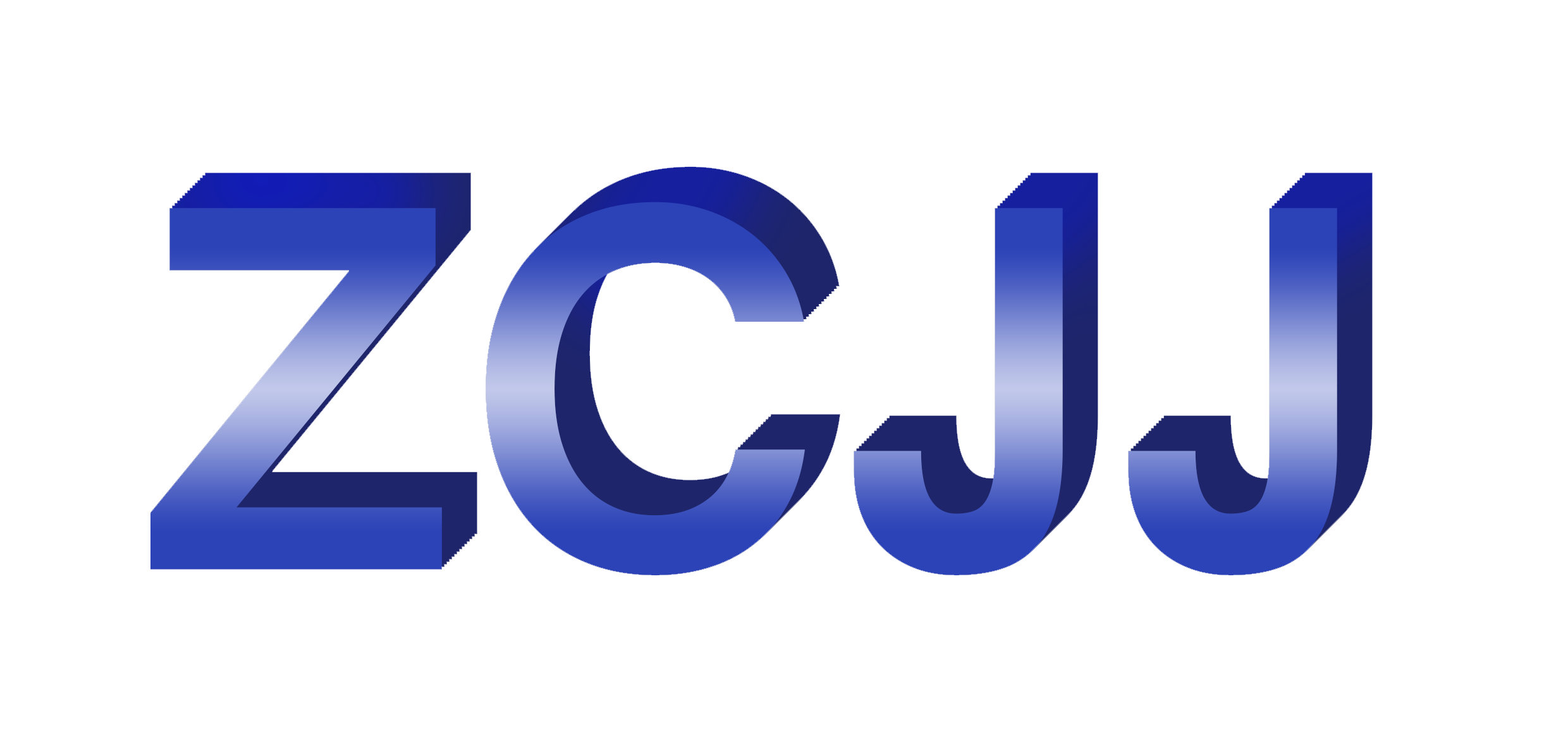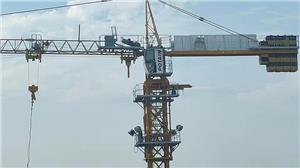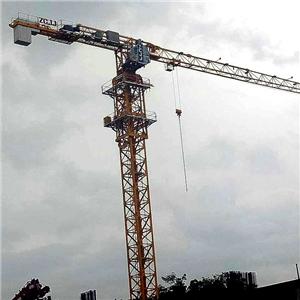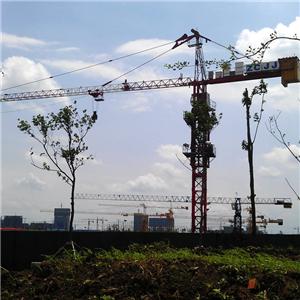Structural strength and stability analysis of Crane from tower
Tower lifting is a kind of special machinery widely used in industrial and mining enterprises and construction sites. In recent years, tower hanging accidents are frequent, and some accidents are caused by strong typhoons. Therefore, tower hanging can effectively resist wind hazards. It is an important task to promote safe production and ensure the smooth development of operations. From the structure strength and stability analysis of the tower crane strong typhoon impact, and from the wind load and other aspects of the design and use of the problem of wind resistance.
(1) Effect of wind on the structure strength of a tower crane
When the wind blows vertically to the tower crane frame, the wind load acting on the arm frame and the hanging weight causes the tower crane body to generate a torque M, which decomposes this torque into the four-sided plane truss of the fuselage. The abdominal rods of the four plane trusses will produce a stress σ 1 that is proportional to the horizontal distance between the wind load and the wind center. Obviously, the larger the wind load, the greater the amplitude of the arm frame. The greater the σ 1 in the abdominal rod. In addition, the arm frame's gravity, gravity, and inertia force will also produce a stress σ 1 for the tower's abdominal bar, and σ 2 is also proportional to the magnitude. In the actual design calculation, it can be found that at a certain wind load, σ 1 is much larger than σ 2. This shows that the main factor controlling the stress value of the abdominal rod at this time is wind load. Therefore, when the arm frame is in a large position, special attention must be paid to the instability of the airframe abdominal bar caused by vertical wind, resulting in the destruction of the tower crane.
When the windward tower crane arm frame blows head-on, the tower is hung at a minimum, and the wind load will cause the tower crane arm frame to bend back around the arm frame root hinge. If the wind load exceeds a certain value, and the tower crane is exactly an empty hook, this backward bending moment will overcome the forward bending moment of the arm frame from gravity, causing the arm frame to tilt backwards. For a tower crane that does not have an anti-recoil device for the arm frame, the rear tilt of the arm frame will lead to the destruction of the entire aircraft. Therefore, it should be equipped with an armband anti-dumping device.
(2) The influence of wind on the stability of Tower lifting
If the sum of the torques of each load acting on the tower crane is greater than zero, the tower crane is stable. For tower lifts with a fixed weight, the moment Ml of the tower hanging from the gravity to the overturning edge is a stable moment, and the torque of the lifting load and the wind load blown from the rear of the arm frame to the overturning edge and the M2 is the overturning force moment. For a wind load F1w with Ml + M2 = 0, the stability of the tower crane is in a critical state, such as F1w & GT; Fw, the tower will be overturned[ 1] .. (For details of the calculation formula, please refer to the tower crane design specifications GB38II and GB/T13752)
For a tower crane in an empty state, the moment of self-gravity of the tower crane on the overturning edge is a stable moment, and the moment generated by the headwind load is an overturning moment. In order to meet the requirements for the stability of the entire machine when the maximum lifting weight is set, the tower is often hoisted from the center of the force of gravity, which will inevitably lead to the result of the backward tendency of the tower crane when it is empty. If the head-on wind load is increased to a certain extent, the stable moment generated by the gravity of the tower hanging from the center of gravity is not enough to overcome the overturning moment generated by the wind load, and the entire machine will collapse.
(3) The influence of wind load on the back tilt of the crane and the back tilt of the entire machine
When the tower is hung in a smaller range, the wind load will cause the tower crane to generate a recoil moment around the hinge point of the base of the arm. The tower suspension or anti-rear tilt device of the rear tilt device will fail, causing the arm frame to overturn backwards, and the rear tilt of the arm frame will lead to the destruction of the entire machine. For the tower crane with a fixed support arm or the horizontal car with a variable width tower, it will be faced. When the wind is on the face, there will be a danger of reversion of the entire aircraft. In the design of Tower hoists, in order to meet the maximum rated weight, the entire machine will not collapse forward, and the center of gravity of gravity will often be tilted backwards. This will lead to a tendency for the tower hoist to lean backward when the hook is empty.
(4) Impact of strong typhoons on non-working towers
Unworking wind load plays a decisive role in the design of steel structure, stability against overturning and safety device against wind and skid. According to the safety regulations for tower lifting, when a strong typhoon stops working, the tower hanging shall be anchored. At this point, the effect of the wind on the tower is similar to the general architectural structure. However, there are still differences. The difference is that the connection between the general building and the foundation is permanent, and the tower crane and the ground(or foundation) are temporarily connected. The field needs to consider the restrictions and convenience of the connection site.
(5) Impact of building wind farms on tower lifting
Due to the influence of the surrounding building environment, there will be certain dangerous aerodynamics in the wind field around the tower, increasing the risk of Tower overturning or collapse[ 2] .. The safety regulations for tower cranes stipulate that in order to resist strong typhoons, non-working tower cranes should loosen the brake of the rotary mechanism so that the tower boom frame can automatically turn to a plane parallel to the wind direction when a strong typhoon approaches, reducing the wind load. This is representative in turbulent winds that have no environmental impact. However, due to the influence of surrounding buildings, this situation is rare. In addition, due to the narrow tube effect, the wind speed between towering buildings can increase significantly, and the wind power of the tower hanging environment can increase




